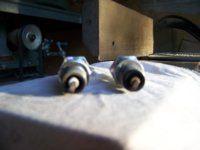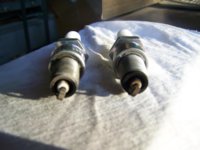Just rebuilt the top end on my 81. It ran great and was completely reliable the 4 years I rode it before the rebuild. (one kick every time)Only rebuilt because the front cam chain guide was falling apart.
I had the carbs tuned quite nicely, so I just left them the way they were when I put everything back together
The bike is definitely got more power, than it did before, but when I come to a stop it seems to idle rougher and I have to give it more throttle when I disengage the clutch. Also sometimes I have to kick it more than once to get it started. Thought the pilot jets may have gotten something in them, but they are clean. My first instinct is it is a carb adjustment, but then started thinking it might be electrical. I have been running the same Wal Mart battery for at least four seasons now. It reads 14 volts at idle, but was just 11.75 with engine off, after sitting for one day.
I had the carbs tuned quite nicely, so I just left them the way they were when I put everything back together
The bike is definitely got more power, than it did before, but when I come to a stop it seems to idle rougher and I have to give it more throttle when I disengage the clutch. Also sometimes I have to kick it more than once to get it started. Thought the pilot jets may have gotten something in them, but they are clean. My first instinct is it is a carb adjustment, but then started thinking it might be electrical. I have been running the same Wal Mart battery for at least four seasons now. It reads 14 volts at idle, but was just 11.75 with engine off, after sitting for one day.


